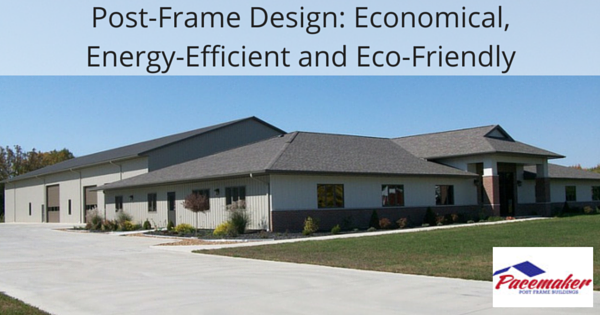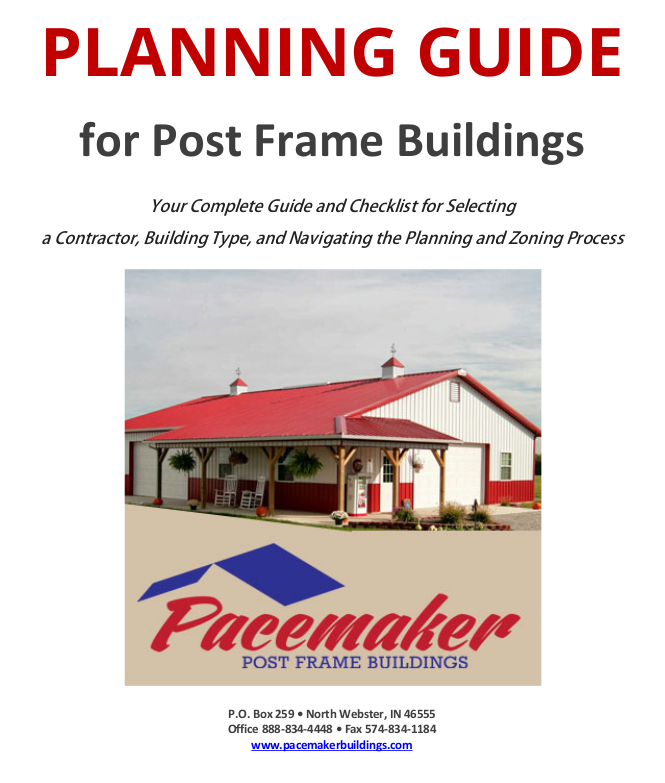Post frame construction is fast becoming the preferred method of construction for many uses.
As a longtime mainstay option for barns and storage buildings, post frame has more recently been used in award-winning single family homes, auto dealerships, school buildings, churches, civic offices, and even medical centers.
The economy, efficiency, and eco-friendliness of post frame construction offers a legitimate and valuable option for individuals and communities.
Economical
The economic advantages of post-frame construction include:
- Simpler and more flexible design
- Shorter build time
- Fewer materials
- Reduced labor
- Better energy efficiency
Post-frame construction is the most economical method of construction. From design to site preparation to the materials utilized, each phase is faster, and the process is more flexible.
Design modifications may be accommodated right up to the time of construction. Changes are often impossible to accomplish with conventional construction methods.
The post frame process is simple and uses less material and preparation than conventional methods. You will require fewer special craftsmen than with other building techniques.
Treated wooden posts embedded into concrete piers or concrete foundation for stabilization are long-lasting and support extra-wide spans between columns. You won’t need additional support columns or walls that are critical to other types of construction.
Wide, unobstructed spans allow for additional sections later without disturbing the structural integrity of the building. This spacing also enhances the effectiveness of the insulation, thereby reducing the cost to heat and cool the interior.
Less time required for construction results in less labor and equipment tied up in completing the project. Less time, labor and materials add up to lower cost.
Energy Efficient
The energy efficiency of post frame construction can be calculated as the amount of energy required to produce, maintain, and eventually dispose and recycle the components of the building. In each case, post-frame is far more energy efficient than conventional construction methods.
Besides requiring considerably less energy during construction, post-frame buildings can be engineered to significantly reduce energy consumption. Highly efficient insulated liner packages are available and can lower heating and cooling costs substantially.
With the liner package, you should get up to R46 blown insulation in the attic space and R19 insulation in the walls. The wider spacing of the support posts allows for more continuous and uniform insulation protection across the roof and sides of the building.
The combination of wooden framing and added insulation retards heat transmission better than conventional steel or concrete block and masonry walls. Note that steel transfers heat 310 times faster than wood, while concrete block has very little insulating capability.
High-quality reflective roof and wall materials reflect heat far better than traditional tar shingle roofing, saving money in cooling costs.
Eco-Friendly
Eco-friendliness can be defined by the amount of energy used to build and operate, the sustainability of the materials used, and degree of intrusion on the surrounding landscape and environment. Post frame construction leads the way in all categories.
Post frame buildings are supported by wooden posts – a highly sustainable building material. By its very nature, wood is renewable, easily recycled, and biodegradable, unlike many other common construction materials.
Because of the limited site preparation required and the reduced volume of energy and “green” material that go into a post frame building, this type of construction is the most environmentally positive.
To enjoy all of the savings and eco-friendly benefits of post-frame construction, you should work with experienced material suppliers and contractors for your new building or addition.
Contact us today to find out more about how a post-frame building can work for your project.

